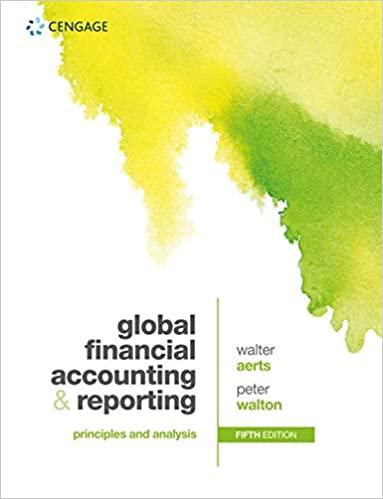

Estimating and Recording Bad Debt Estimates and Write-Offs; Reporting of Accounts Receivable At December 31, its annual year-end, the accounts of Sun Systems Inc. show the following. 1. $504,000 in sales revenue for the year, of which one-sixth was on account. 2. \$2,520 credit balance in Allowance for Doubtful Accounts, as of December 31 of the prior year. 3. $50,540 debit balance in Accounts Receivable as of December 31 of the current year (prior to any write-offs of uncollectible accounts during the current year). 4. $2,940 in uncollectible accounts to be written off as of December 31 of the current year. 5. Aging schedule at December 31 of the current year, showing the following breakdown of total accounts receivable excluding amounts to be written off. Required a. Prepare the entry to write off the uncollectible accounts. b. Prepare the adjusting entry on December 31 to record bad debt expense for each of the following separate assumptions concerning expected bad debt loss rates. Note: Treat each situation separately. 1. Bad debt expense is based on 1.5% of credit sales. 2. Allowance for doubtful accounts is based on 2.5% of total receivables at year-end. 3. Allowance for doubtful accounts is based on the following aging schedule: Not past due, 0.5%; Past due 1-60 days, 1\%; and Past due over 60 days, 8%. 4. Bad debt expense is based on the direct write-off method (assume entry in part a has not been recorded). c. Prepare the balance sheet disclosure showing accounts receivable less the allowance for doubtful accounts for each assumption 1 through 4 of part b. For assumption 4 only, assume there is a zero balance in the allowance for doubtful accounts on December 31 of the prior year. d. For reporting purposes in looking at part b, what is one limitation when using assumption 1 and when using assumption 4 ? - Note: Do not use negative signs with any of your answers. Cash Accounts Receivable Allowance for Doubtful Accounts Interest Receivable Inventory Inventory-Estimated Returns Refund Liability Sales Revenue Sales Returns Sales Discount Sales Discount Forfeited Cost of Goods Sold Bad Debt Expense N/A Estimating and Recording Bad Debt Estimates and Write-Offs; Reporting of Accounts Receivable At December 31, its annual year-end, the accounts of Sun Systems Inc. show the following. 1. $504,000 in sales revenue for the year, of which one-sixth was on account. 2. \$2,520 credit balance in Allowance for Doubtful Accounts, as of December 31 of the prior year. 3. $50,540 debit balance in Accounts Receivable as of December 31 of the current year (prior to any write-offs of uncollectible accounts during the current year). 4. $2,940 in uncollectible accounts to be written off as of December 31 of the current year. 5. Aging schedule at December 31 of the current year, showing the following breakdown of total accounts receivable excluding amounts to be written off. Required a. Prepare the entry to write off the uncollectible accounts. b. Prepare the adjusting entry on December 31 to record bad debt expense for each of the following separate assumptions concerning expected bad debt loss rates. Note: Treat each situation separately. 1. Bad debt expense is based on 1.5% of credit sales. 2. Allowance for doubtful accounts is based on 2.5% of total receivables at year-end. 3. Allowance for doubtful accounts is based on the following aging schedule: Not past due, 0.5%; Past due 1-60 days, 1\%; and Past due over 60 days, 8%. 4. Bad debt expense is based on the direct write-off method (assume entry in part a has not been recorded). c. Prepare the balance sheet disclosure showing accounts receivable less the allowance for doubtful accounts for each assumption 1 through 4 of part b. For assumption 4 only, assume there is a zero balance in the allowance for doubtful accounts on December 31 of the prior year. d. For reporting purposes in looking at part b, what is one limitation when using assumption 1 and when using assumption 4 ? - Note: Do not use negative signs with any of your answers. Cash Accounts Receivable Allowance for Doubtful Accounts Interest Receivable Inventory Inventory-Estimated Returns Refund Liability Sales Revenue Sales Returns Sales Discount Sales Discount Forfeited Cost of Goods Sold Bad Debt Expense N/A








